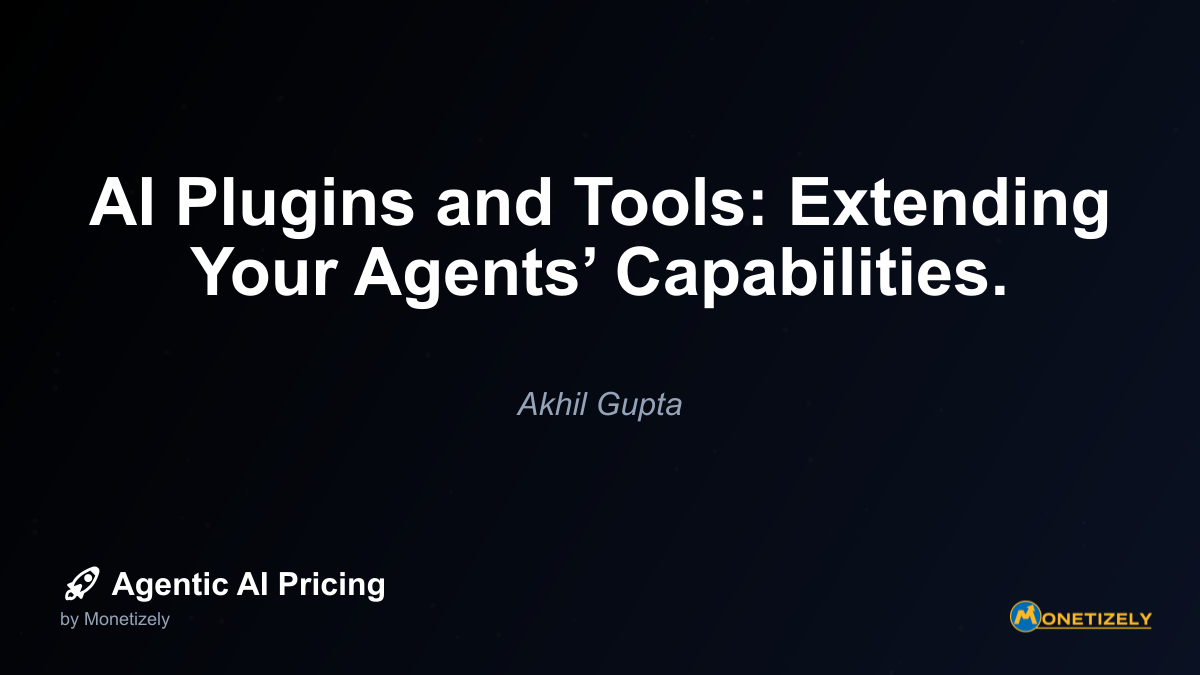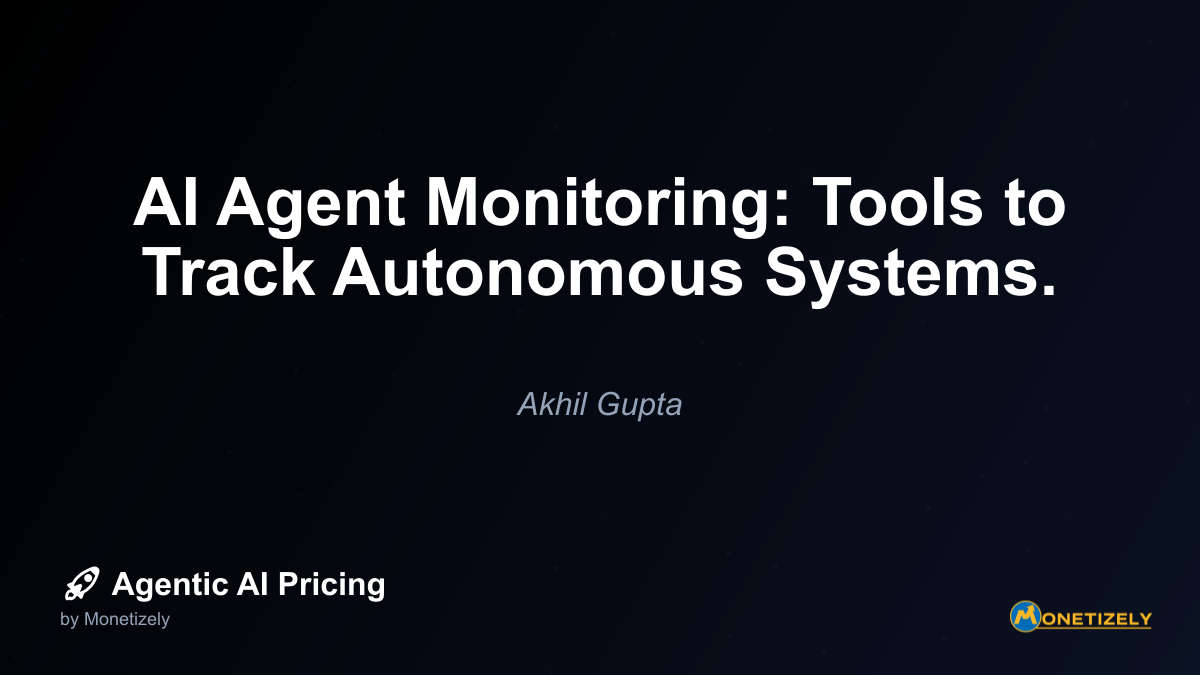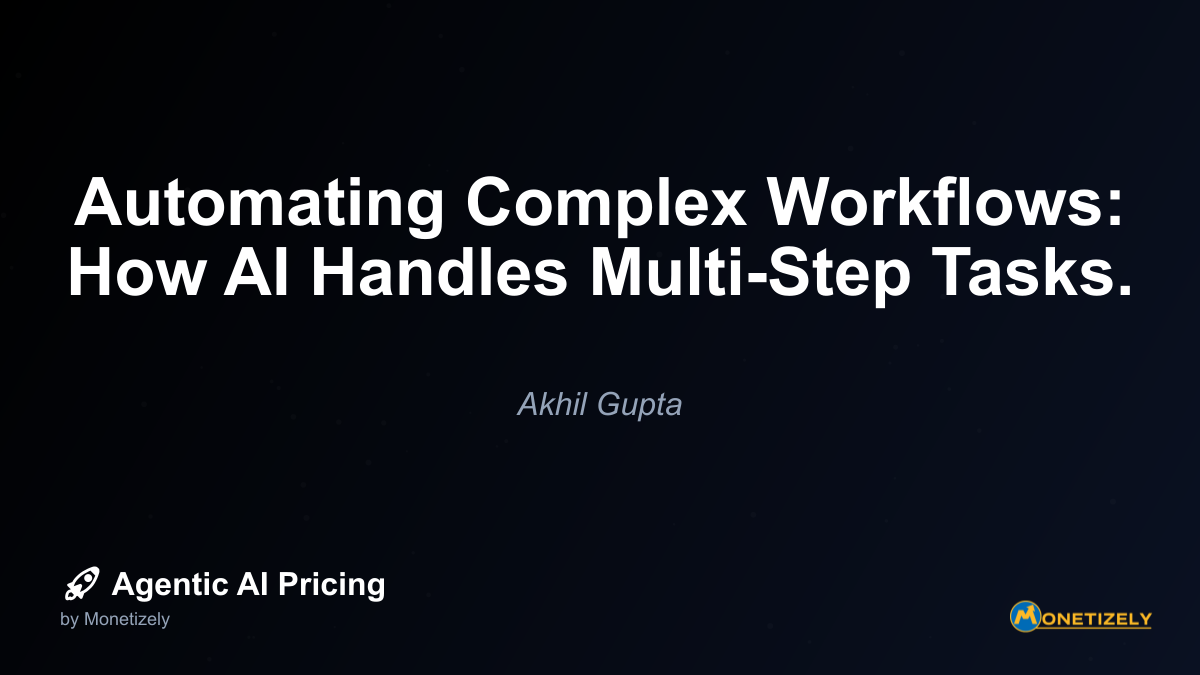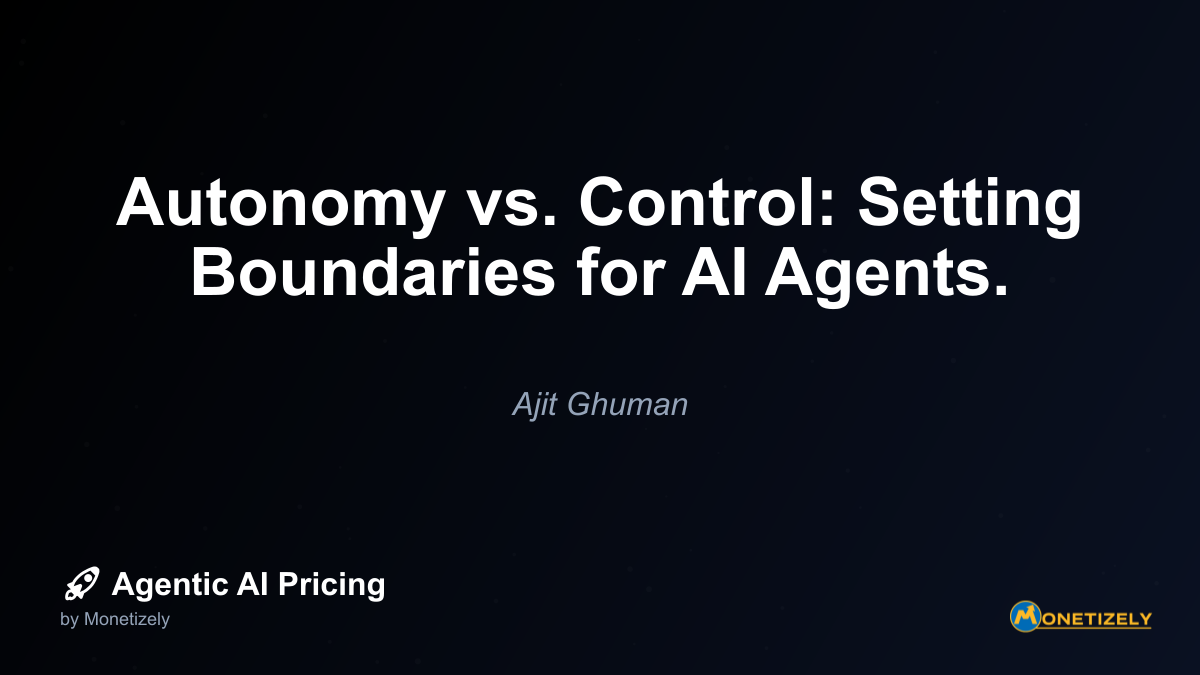· Akhil Gupta · Technical Insights · 7 min read
Multimodal AI: Agents that Work with Text, Images, and More
AI and SaaS Pricing Masterclass
Learn the art of strategic pricing directly from industry experts. Our comprehensive course provides frameworks and methodologies for optimizing your pricing strategy in the evolving AI landscape. Earn a professional certification that can be imported directly to your LinkedIn profile.
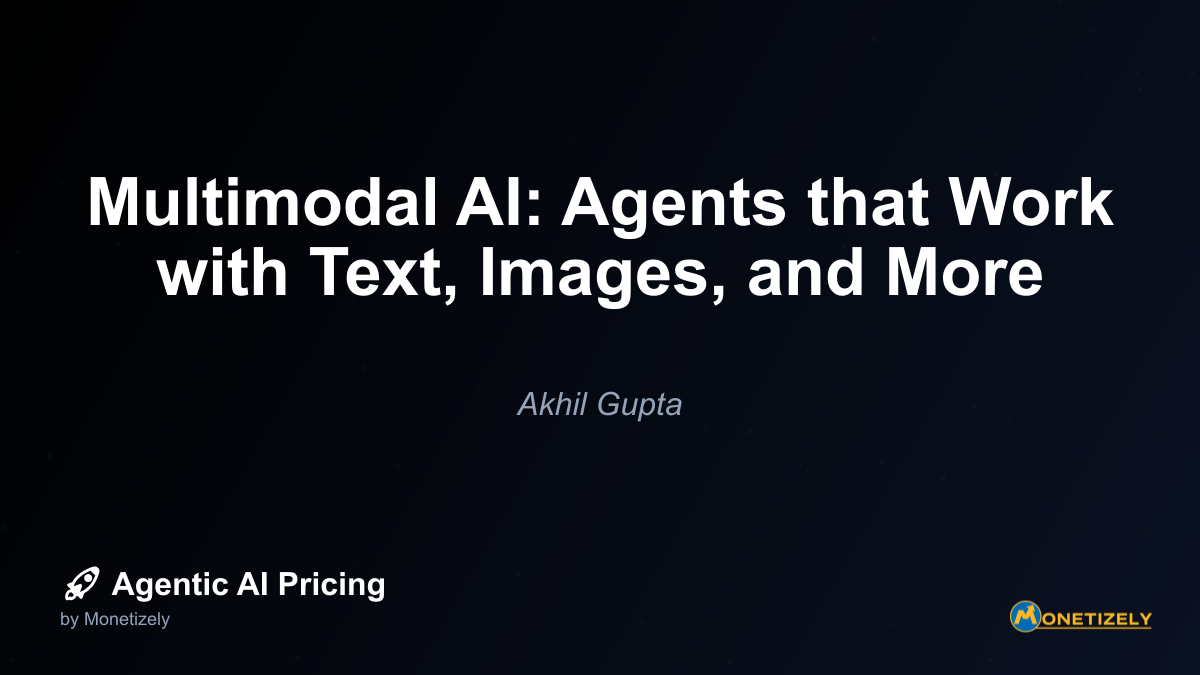
Modality-Specific Cost Factors
Different modalities have different computational requirements and associated costs:
- Image processing: Typically more resource-intensive than text, requiring specialized hardware accelerators
- Audio analysis: Can be computationally expensive, especially for real-time processing
- Video handling: Usually the most resource-intensive, combining both visual and temporal processing
- Text processing: Generally the least expensive modality, but still scales with volume
These differences often translate directly to pricing models, with providers charging different rates depending on which modalities are being utilized.
Common Pricing Structures
Multimodal AI services typically employ one of several pricing approaches:
1. Modality-Based Pricing
This approach charges differently based on which modalities are being used:
- Text: $X per 1,000 tokens
- Images: $Y per image processed
- Audio: $Z per minute of audio
- Combined operations: Often priced at premium rates
This structure directly reflects the different computational costs associated with each modality.
2. Operation-Based Pricing
Some providers charge based on the specific operations being performed:
- Analysis operations: Understanding content across modalities
- Generation operations: Creating new content in different formats
- Transformation operations: Converting between modalities (e.g., speech-to-text)
Each operation type may have its own pricing tier based on complexity.
3. Subscription Tiers with Modality Allowances
Enterprise-focused offerings often provide tiered subscriptions with specific allowances:
- Basic tier: Limited text operations with minimal image processing
- Standard tier: Expanded text capabilities with moderate image and audio processing
- Premium tier: Full multimodal capabilities including video
This approach simplifies budgeting for organizations with predictable usage patterns.
4. Hybrid Models
Many providers are adopting hybrid pricing approaches that combine elements of the above:
- Base subscription fees for access to the service
- Usage-based charges that vary by modality
- Volume discounts across modalities
For businesses exploring multimodal AI, understanding these pricing structures is essential for accurate budgeting and ROI calculations.
Cost Optimization Strategies
Given the potentially higher costs of multimodal AI, organizations should consider several strategies to optimize their spending:
Modality selection: Only use the modalities necessary for each task (don’t process images if text alone suffices)
Resolution and quality adjustments: Lower image resolutions or audio quality when full fidelity isn’t required
Caching common operations: Store results of frequent operations rather than reprocessing
Batch processing: Group similar requests together rather than processing individually
Hybrid approaches: Use simpler, less expensive models for initial processing and only invoke multimodal capabilities when necessary
These strategies can significantly reduce costs while maintaining the benefits of multimodal AI.
Implementation Challenges and Considerations
Beyond pricing, organizations should be aware of several other factors when implementing multimodal AI:
Infrastructure Requirements
Multimodal AI typically demands more robust infrastructure:
- GPU/TPU resources: Specialized hardware accelerators are often necessary
- Storage capacity: Managing various media types requires more storage
- Bandwidth considerations: Transferring images, audio, and video consumes more bandwidth
Organizations must ensure their infrastructure can support these requirements or consider cloud-based solutions.
Data Privacy and Security
Working with multiple data types introduces additional privacy considerations:
- Visual privacy: Images may contain sensitive information or identifiable individuals
- Audio privacy: Voice recordings have biometric implications
- Cross-modal inference: The AI might derive sensitive information by connecting data across modalities
Comprehensive privacy policies and security measures are essential when deploying multimodal systems.
Integration Complexity
Integrating multimodal AI into existing systems presents unique challenges:
- API compatibility: Ensuring systems can handle various data formats
- User interface design: Creating intuitive interfaces for multimodal interaction
- Response handling: Managing different types of AI outputs within applications
Organizations should plan for more complex integration processes compared to text-only systems.
Quality and Performance Evaluation
Assessing multimodal AI performance requires more sophisticated evaluation methods:
- Cross-modal accuracy: How well does the system understand relationships between modalities?
- Modality-specific metrics: Different evaluation criteria for each type of input/output
- User experience metrics: How intuitive and helpful are the multimodal interactions?
Developing comprehensive evaluation frameworks is crucial for ensuring system effectiveness.
The Future of Multimodal AI
As we look ahead, several trends are likely to shape the evolution of multimodal AI:
Increasing Integration of Modalities
Future systems will likely handle even more types of information simultaneously, potentially including:
- 3D spatial data: Understanding physical spaces and objects
- Tactile information: Processing haptic feedback and physical properties
- Biological signals: Interpreting physiological data like heart rate or brain activity
This expansion will create even more powerful AI systems capable of understanding our world in increasingly nuanced ways.
More Efficient Architectures
As the field matures, we can expect more efficient model architectures that reduce the computational burden:
- Modality-specific optimizations: Specialized processing paths for different types of data
- Adaptive computation: Using only the necessary resources based on input complexity
- Distilled models: Smaller, more efficient versions of large multimodal systems
These improvements will likely make multimodal AI more accessible and affordable over time.
Specialized Vertical Solutions
Rather than general-purpose multimodal AI, we’ll likely see more specialized systems designed for specific industries:
- Healthcare-specific multimodal AI: Optimized for medical imagery and patient data
- Financial multimodal systems: Specialized for document processing and financial visualizations
- Retail-focused solutions: Designed for product imagery, customer service, and inventory management
These vertical solutions will offer better performance and more relevant features for their target industries.
Evolving Pricing Models
As the technology matures, pricing models will likely evolve to become:
- More predictable: With clearer relationships between usage and costs
- More flexible: Offering customizable plans based on specific modality needs
- More value-based: Charging based on business outcomes rather than raw computation
Organizations that stay informed about these trends can position themselves to adopt multimodal AI in the most cost-effective ways.
How Businesses Should Prepare for Multimodal AI
To effectively leverage multimodal AI technologies, organizations should consider the following steps:
1. Assess Use Case Suitability
Not every AI application benefits from multimodal capabilities. Organizations should:
- Identify scenarios where multiple data types are naturally present
- Evaluate the potential value of cross-modal reasoning for specific business problems
- Consider whether simpler, unimodal approaches might suffice
This assessment helps ensure investments in multimodal AI deliver meaningful returns.
2. Develop a Data Strategy
Multimodal AI requires diverse data types, often in combination:
- Audit existing data across formats and modalities
- Identify gaps in multimodal data collections
- Establish processes for collecting, storing, and managing diverse data types
- Address privacy and compliance considerations for each modality
A comprehensive data strategy is the foundation for successful multimodal AI implementation.
3. Plan for Pricing Variability
Given the evolving nature of multimodal AI pricing, organizations should:
- Budget with flexibility for different pricing models
- Establish usage monitoring and controls
- Consider pilot projects to gather real-world cost data
- Evaluate both cloud-based and on-premises options
This approach helps manage financial risks while exploring the technology’s potential.
4. Invest in Technical Expertise
Multimodal AI requires specialized knowledge:
- Train existing teams on multimodal concepts and technologies
- Consider partnerships with specialized providers
- Build cross-functional teams that understand different data types
- Develop evaluation frameworks for multimodal systems
The right expertise can significantly improve implementation success and ROI.
5. Start with Hybrid Approaches
Rather than going fully multimodal immediately, consider hybrid approaches:
- Augment existing text-based systems with selective multimodal capabilities
- Implement multimodal features in specific high-value use cases first
- Use simpler models for routine tasks and more sophisticated multimodal models for complex scenarios
This incremental approach reduces risk while building organizational experience.
Conclusion
Multimodal AI represents a significant evolution in artificial intelligence capabilities, moving beyond text-only systems to create more human-like understanding across different types of information. For businesses, this technology opens new possibilities for customer interaction, content creation, analysis, and problem-solving.
However, these expanded capabilities come with new considerations around implementation, infrastructure, and importantly, pricing. Different modalities have different computational requirements, leading to more complex pricing structures that organizations must navigate carefully.
As the technology continues to mature, we can expect more efficient architectures, more specialized solutions, and more flexible pricing models. Organizations that understand these trends and prepare strategically will be best positioned to leverage multimodal AI for competitive advantage.
The key to success lies in thoughtful assessment of use cases, comprehensive data strategies, flexible budgeting approaches, and incremental implementation. By taking these steps, businesses can harness the power of multimodal AI while managing costs and maximizing returns.
As we move into this new era of artificial intelligence, the organizations that thrive will be those that understand not just what multimodal AI can do, but how to implement it effectively and economically within their specific business context.
Co-Founder & COO
Akhil is an Engineering leader with over 16+ years of experience in building, managing and scaling web-scale, high throughput enterprise applications and teams. He has worked with and led technology teams at FabAlley, BuildSupply and Healthians. He is a graduate from Delhi College of Engineering and UC Berkeley certified CTO.
Pricing Strategy Audit
Let our experts analyze your current pricing strategy and identify opportunities for improvement. Our data-driven assessment will help you unlock untapped revenue potential and optimize your AI pricing approach.

